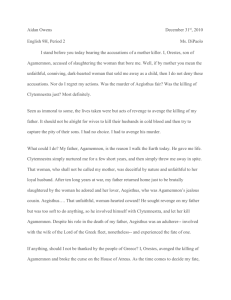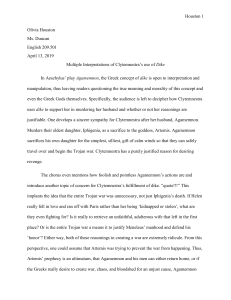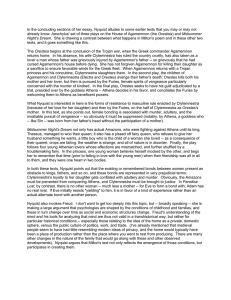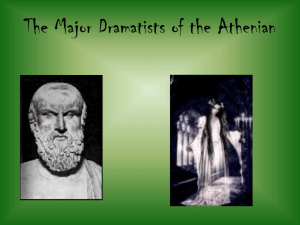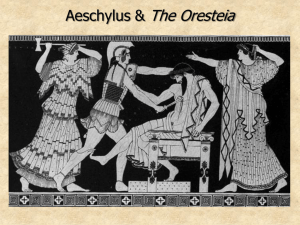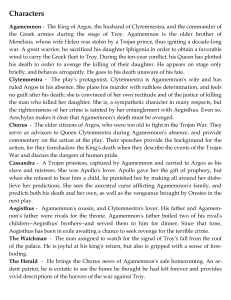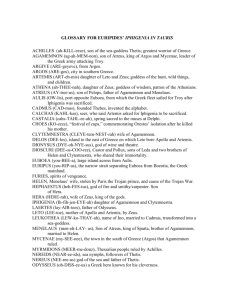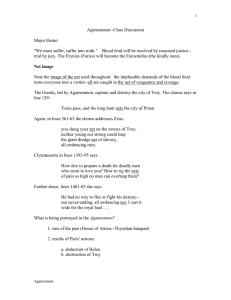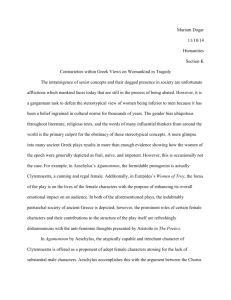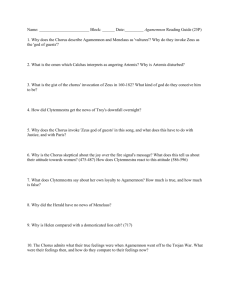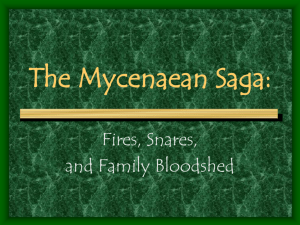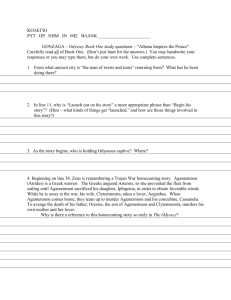Emily ALLEN, Harvard University / CHS In Aeschylus' Oresteia
advertisement
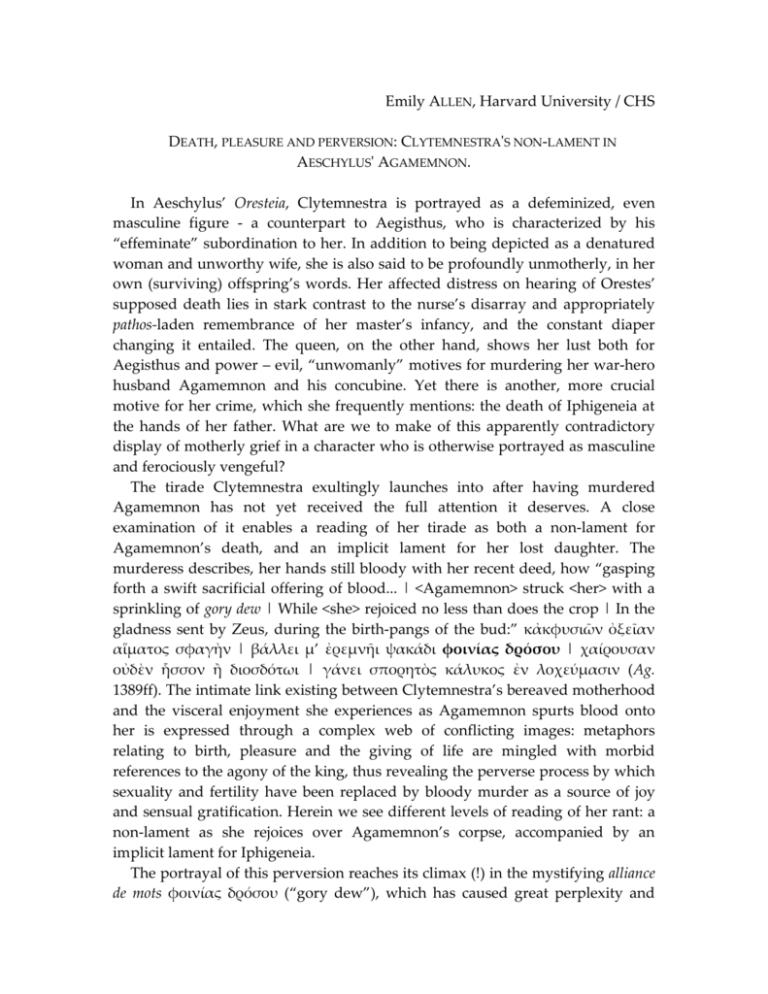
Emily ALLEN, Harvard University / CHS DEATH, PLEASURE AND PERVERSION: CLYTEMNESTRA'S NON-LAMENT IN AESCHYLUS' AGAMEMNON. In Aeschylus’ Oresteia, Clytemnestra is portrayed as a defeminized, even masculine figure - a counterpart to Aegisthus, who is characterized by his “effeminate” subordination to her. In addition to being depicted as a denatured woman and unworthy wife, she is also said to be profoundly unmotherly, in her own (surviving) offspring’s words. Her affected distress on hearing of Orestes’ supposed death lies in stark contrast to the nurse’s disarray and appropriately pathos-laden remembrance of her master’s infancy, and the constant diaper changing it entailed. The queen, on the other hand, shows her lust both for Aegisthus and power – evil, “unwomanly” motives for murdering her war-hero husband Agamemnon and his concubine. Yet there is another, more crucial motive for her crime, which she frequently mentions: the death of Iphigeneia at the hands of her father. What are we to make of this apparently contradictory display of motherly grief in a character who is otherwise portrayed as masculine and ferociously vengeful? The tirade Clytemnestra exultingly launches into after having murdered Agamemnon has not yet received the full attention it deserves. A close examination of it enables a reading of her tirade as both a non-lament for Agamemnon’s death, and an implicit lament for her lost daughter. The murderess describes, her hands still bloody with her recent deed, how “gasping forth a swift sacrificial offering of blood... | <Agamemnon> struck <her> with a sprinkling of gory dew | While <she> rejoiced no less than does the crop | In the gladness sent by Zeus, during the birth-pangs of the bud:” κἀκφυσιῶν ὀξεῖαν αἵματος σφαγὴν | βάλλει μ’ ἐρεμνῆι ψακάδι φοινίας δρόσου | χαίρουσαν οὐδὲν ἧσσον ἢ διοσδότωι | γάνει σπορητὸς κάλυκος ἐν λοχεύμασιν (Ag. 1389ff). The intimate link existing between Clytemnestra’s bereaved motherhood and the visceral enjoyment she experiences as Agamemnon spurts blood onto her is expressed through a complex web of conflicting images: metaphors relating to birth, pleasure and the giving of life are mingled with morbid references to the agony of the king, thus revealing the perverse process by which sexuality and fertility have been replaced by bloody murder as a source of joy and sensual gratification. Herein we see different levels of reading of her rant: a non-lament as she rejoices over Agamemnon’s corpse, accompanied by an implicit lament for Iphigeneia. The portrayal of this perversion reaches its climax (!) in the mystifying alliance de mots φοινίας δρόσου (“gory dew”), which has caused great perplexity and made many suggest an emendation. I propose to read it as a condensed expression of the perversion that has taken place. Δρόσος is used by the chorus, in the much-discussed portent (ll.135ff), to refer to the “helpless young” (δρόσοις ἀέπτοις, Ag.141) whom Artemis protects, and for whose death she demands, in a somewhat paradoxical fashion (one that Clytemnestra adopts in turn), a compensatory death: that of another “innocent whelp,” Iphigeneia. Our passage is thus significant in that, through δρόσος, it calls attention to Clytemnestra’s perpetuation of Artemis’ perversion - one that permeates the entire Oresteia, it has been argued- whereby fertility (“dew”) has turned to murderous vengeance (“gory”), through a deep perversion of motherliness. The oxymoronic φοινίας δρόσου in Aeschylus’ text calls to mind both Iphigeneia’s life and her death, along with Clytemnestra’s lasting pain and tragic metamorphosis. Such imagery enables us to see that Clytemnestra’s monstrosity is great precisely in that it is commensurate with her pain, and thus a sign both of her motherliness past and lost, and of its perverted mutation.
